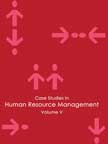Nordstrom: Focusing on a Culture of Service
|
Case Details:
For delivery in electronic format: Rs. 500; For delivery through courier (within India): Rs. 500 + Rs. 25 for Shipping & Handling Charges
»
Human Resource, Organization Behavior Case Studies 
Custom Search
Please note: This case study was compiled from published sources, and is intended to be used as a basis for class discussion. It is not intended to illustrate either effective or ineffective handling of a management situation. Nor is it a primary information source. Chat with us  Please leave your feedback 
| |||||||
Background Note
In 1932, John’s youngest son, Lloyd, joined the business as a marketing specialist. When the brothers took over the business, they renovated the stores, increased the display and merchandising area, carpeted the floor, and improved lighting. The upholstery was changed and comfortable chairs were installed. In 1937, a new large store was started in the Fifth Avenue. At that time the three brothers decided that the posts of president, vice president and secretary / treasurer rotated among them every two years. The goal of the second generation of Nordstroms was to sell shoes to everyone in town. To achieve that, they stocked shoes in different sizes, styles, brands, and colors.
|
Case Studies Links:-
Case Studies,
Short Case Studies,
Simplified Case Studies.
Other Case Studies:-
Multimedia Case Study,
Cases in Other Languages.
Business Reports Link:-
Business Reports.
Books:-
Textbooks,
Workbooks,
Case Study Volumes.





